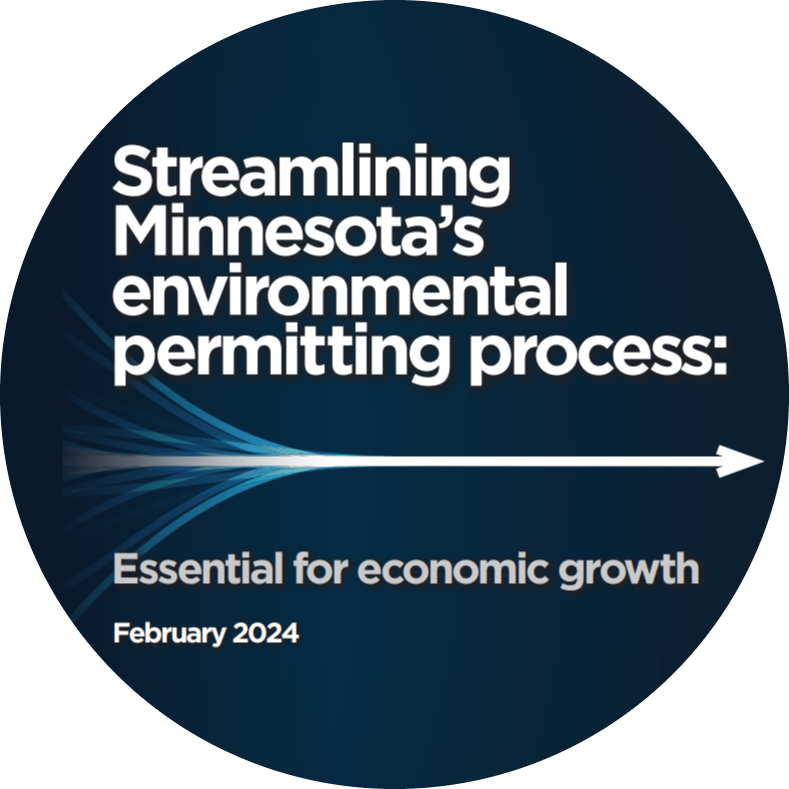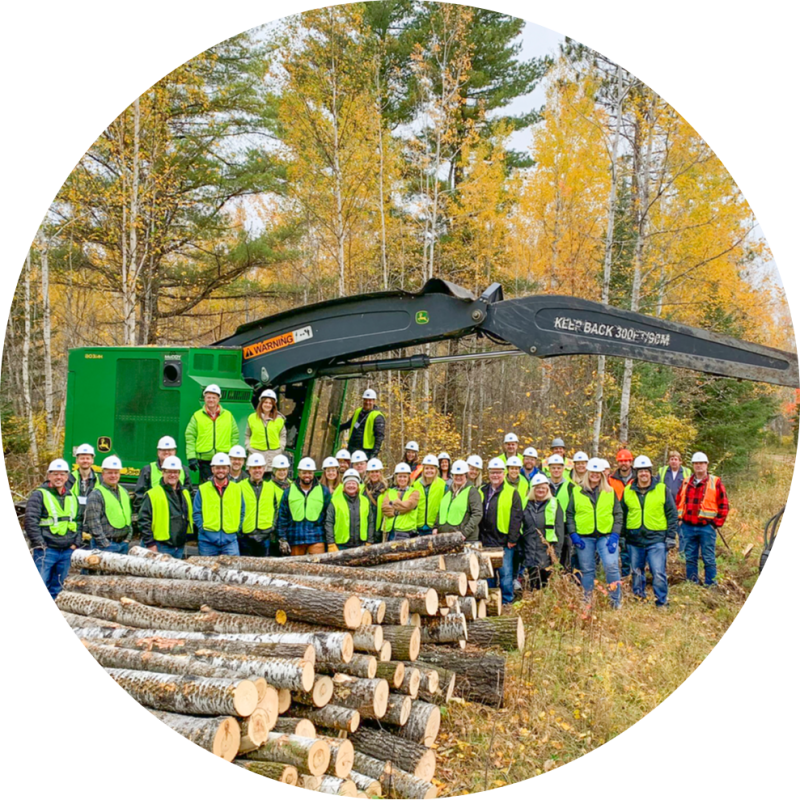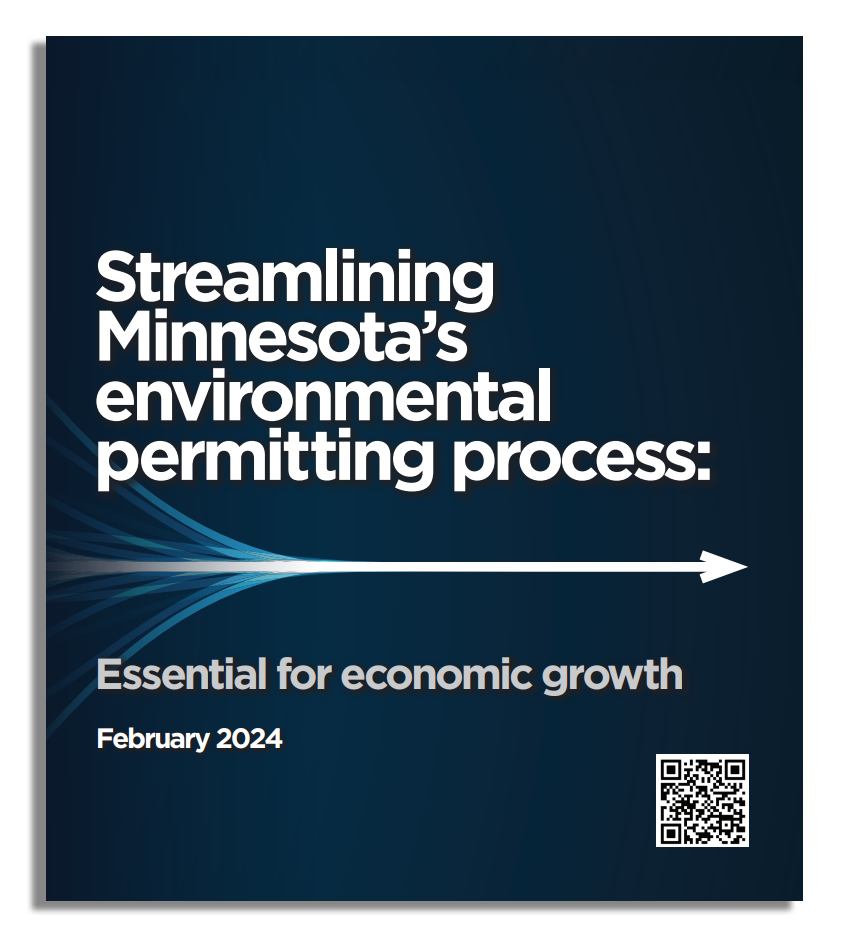Streamlining Minnesota’s environmental permitting process: The economic imperative for permitting reform in Minnesota
Streamlining Minnesota’s permitting programs
can boost capital investments to grow the economy
and meet future needs.
Economic change presents opportunities and challenges for Minnesota in the years ahead. Federal priorities to boost domestic supply chains are creating new opportunities in critical minerals and materials, energy and information technologies. Global population growth and a rising middle class in the developing world will increase demand for consumer and industrial goods, from food and medicine to machinery and vehicles. Automation will shape the types of equipment and skill sets needed in the workplace. Rapid shifts in market conditions and consumer preferences are causing firms to pursue greater resiliency, flexibility and speed-to-market in their production.
A common denominator for all these priorities is that they will require new investments in facilities, equipment and infrastructure to fully meet the opportunities and challenges that lie ahead.
Spurring capital investment could provide a much-needed boost to Minnesota’s economy by building and upgrading the physical assets used to produce goods and services. Economic growth in the state is expected to remain sluggish this decade – with real GDP projected to grow at just 1.4% annually through 2030 – as the size of the workforce plateaus. An aging population and slowing labor force growth will require greater productivity gains to grow the economy and help businesses meet consumer demand.
As the Federal Reserve Bank of Dallas states, “The more productive a society is, the higher its standard of living. Two of the major forces behind increases in productivity are increases in the accumulation of capital goods and increases in the quality of human capital.”
While this is true in any time and place, the changing economic, social and environmental conditions of the current era make investment in productivity growth more important than ever.
There is promising evidence that such investments are beginning to take shape at the national level. Manufacturing construction spending in the U.S. rose by 40% in 2022 and spiked another 70% in 2023, led in part by multibillion-dollar investments in semiconductor fabrication labs, electric vehicle and battery manufacturing, and energy-related products.
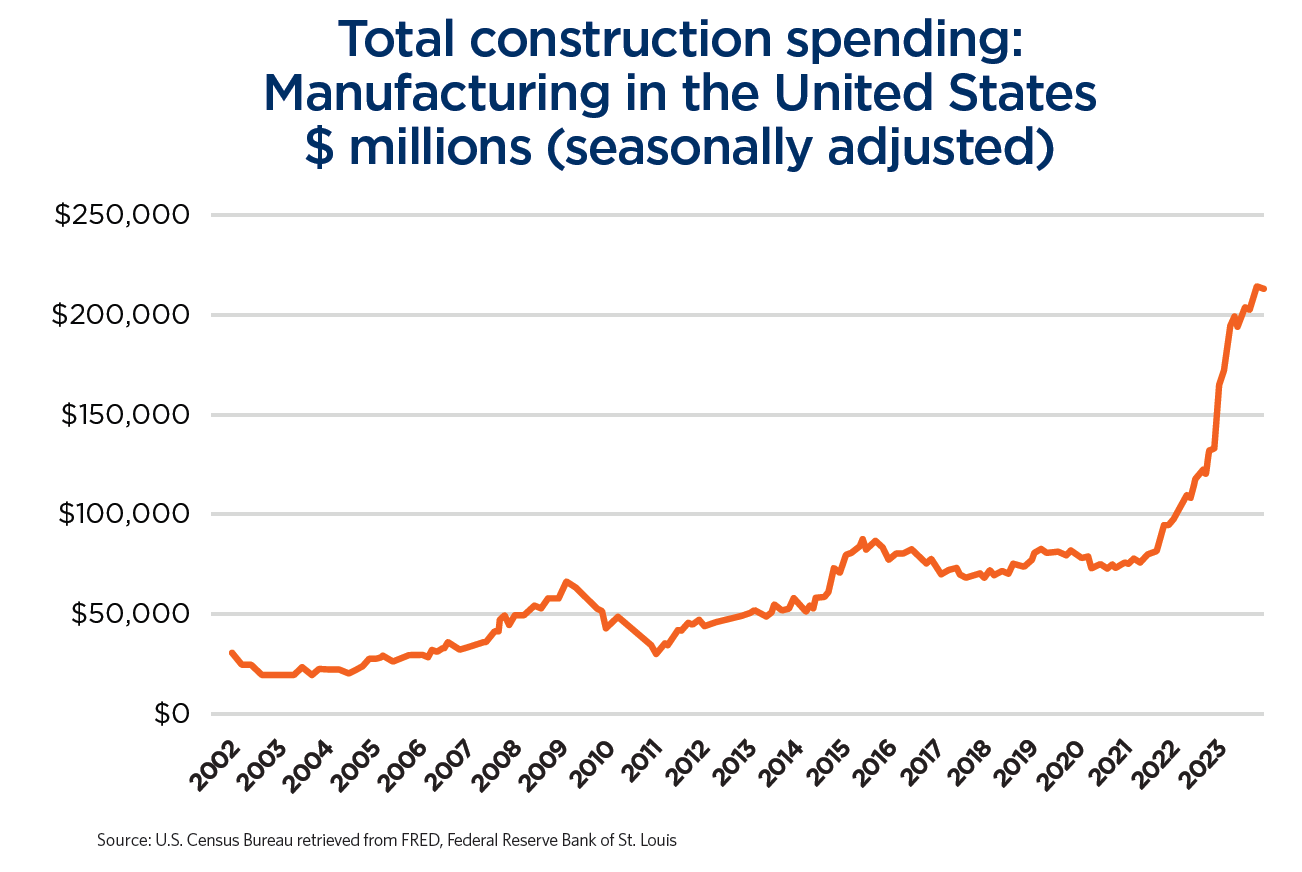
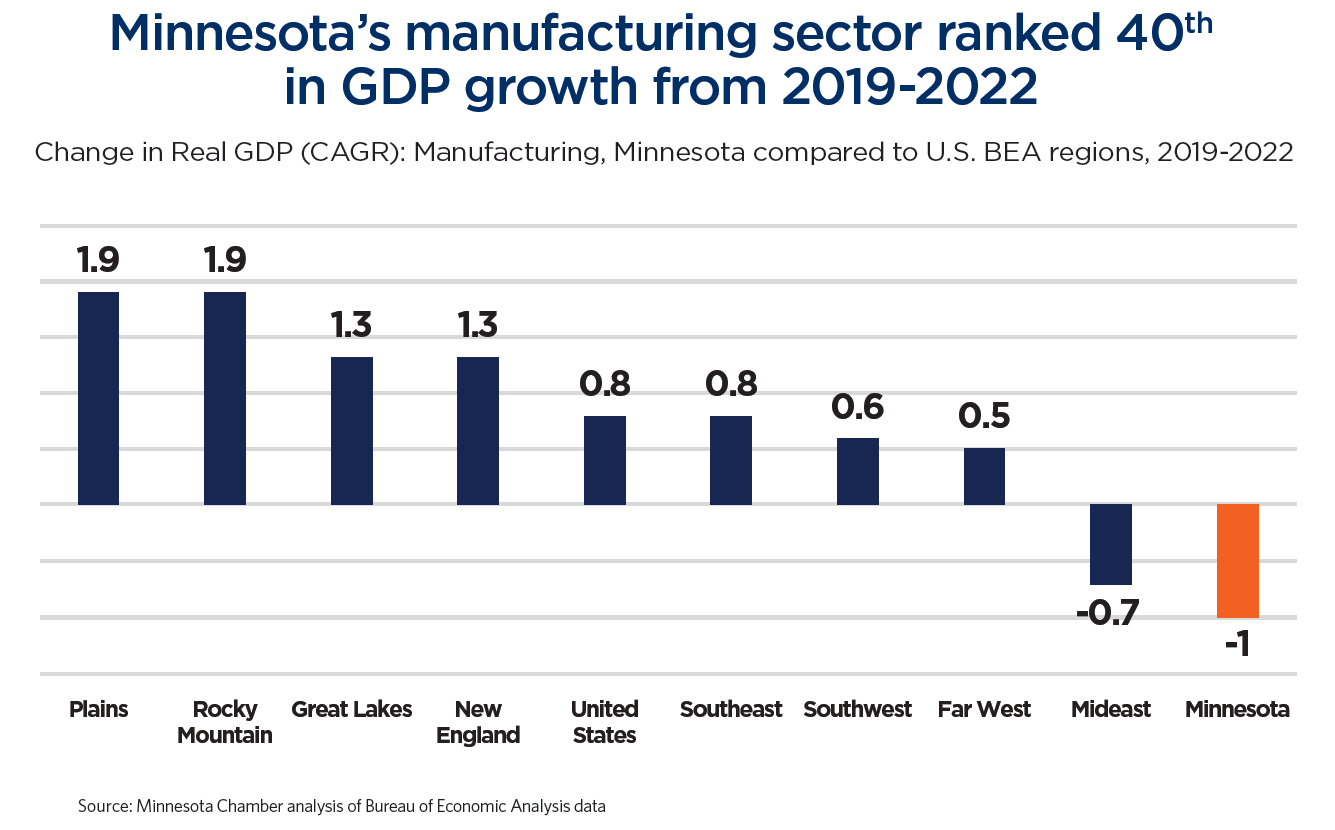
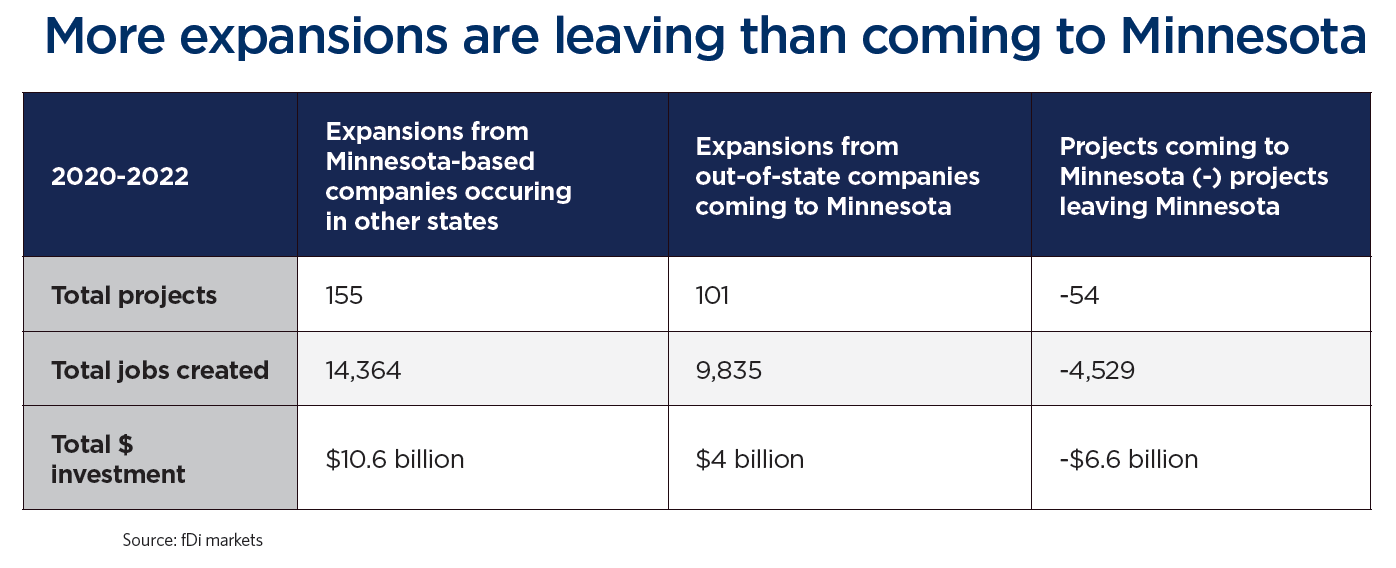
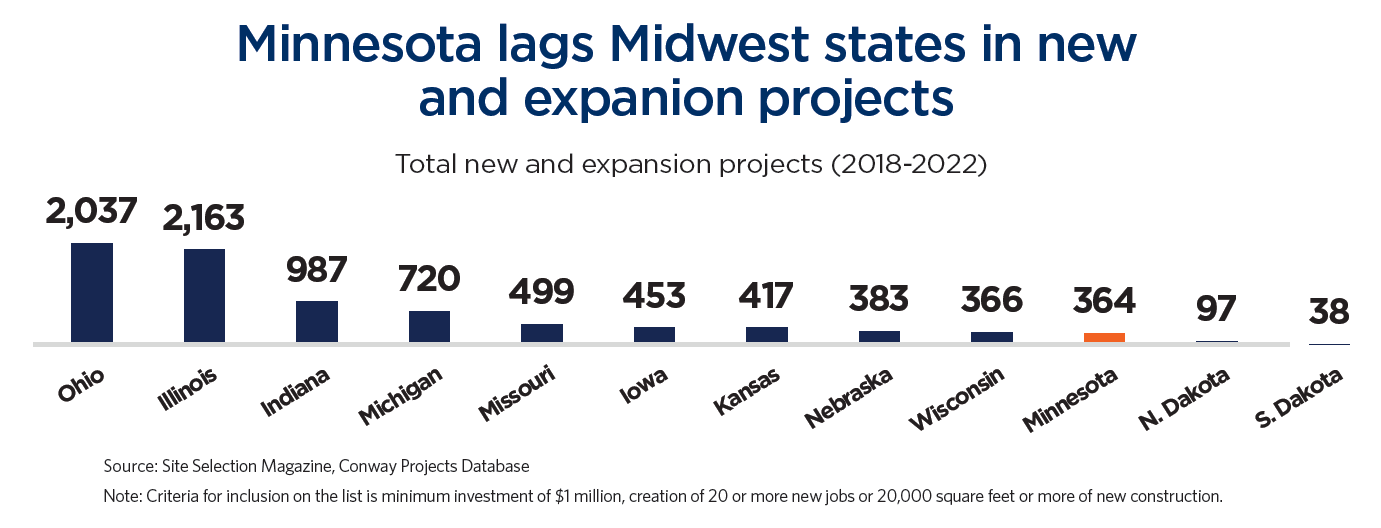
An interactive online map from the White House shows that private companies have announced $640 billion in new projects across the U.S. since 2021.
These trends pose an opportunity for states to secure investment in high-productivity industries, such as manufacturing, mining, agriculture, life sciences, utilities and other industrial activities.
Yet, while Minnesota possesses competitive advantages in many of these industries, the state’s recent track record in securing investments has been mixed. Analysis from the Minnesota Chamber’s Grow Minnesota!® program shows that Minnesota trailed other midwestern states in new facilities and expansion projects this decade. The state’s manufacturing sector ranked 40th in real GDP growth in the first three years of the decade and continued to lag in 2023. Likewise, Minnesota’s mining sector ranked 43rd in GDP growth so far this decade, falling well behind other competing iron ore mining states like Michigan.
There is growing recognition of the need for permitting reform at the national and state levels to free up capital investment in infrastructure, energy and economic development projects.

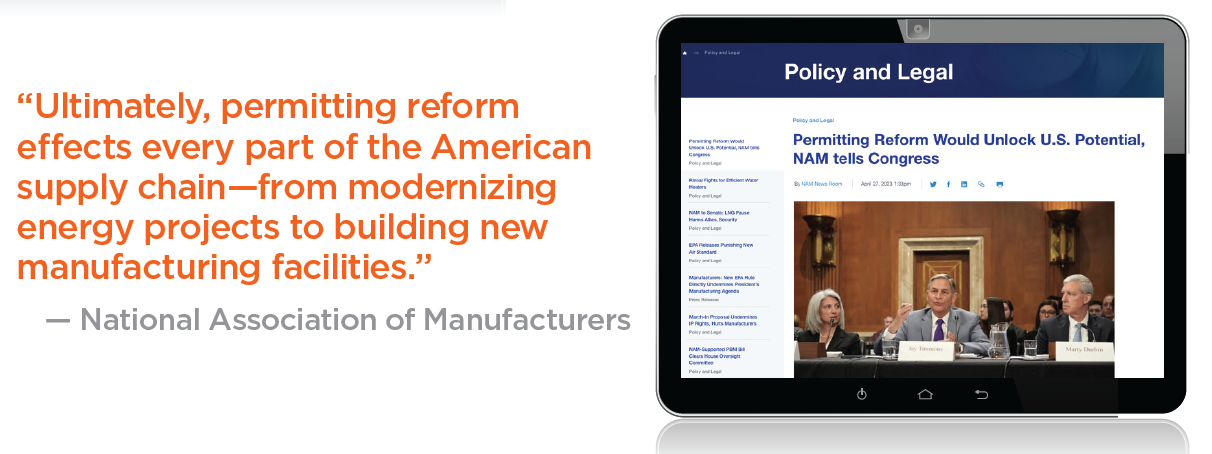
As Minnesota looks to further develop its economy, it can start by making it easier for companies who already seek to build and expand in the state. This is where environmental permitting plays a critical role.
Fully capitalizing on the opportunity to spur new investments will require regulatory mechanisms that safeguard human health and the environment while also creating a transparent and timely path for new projects to take place.
Local, state and federal governments increasingly recognize the need to streamline environmental permitting processes to balance these priorities. Efforts to address permitting bottlenecks have taken shape across the country, often crossing partisan and ideological lines. Indeed, the dual commitment to environmental stewardship and economic development is the common ground on which many recent reform efforts have staked a claim.
As Michigan governor Gretchen Whitmer, a Democrat, states in the opening of her 2023 executive summary, “Permitting delays can increase costs and cause uncertainty for communities and businesses. Effective permitting should balance competing economic, environmental and public interest objectives, ensure that essential metrics are met and help projects get done with full confidence.”
These core principles are reflected by proponents of national permitting reform efforts as well. Groups of varying interests and ideological stripes identify the need to increase speed and certainty in the permitting process while also applying rigorous scientific analysis and community engagement to projects.
Further, these commitments are clearly stated in Minnesota’s permitting policies and past reform efforts. The Minnesota Pollution Control Agency (MPCA) describes its role to “develop innovative, community-centered approaches that protect our natural resources, improve human health and foster strong economic growth.” Likewise, Governor Mark Dayton’s 2011 executive order to increase permitting efficiency ends its opening list of recitals by stating, “Whereas our regulatory environment must ensure environmental protection and support economic development in the state.”
While there is broad agreement on the principles that should guide environmental permitting programs, assessing the degree to which current programs meet these objectives is more difficult. Businesses and environmental consultants continue to report delays and uncertainty in the state’s permitting process. Several high-profile economic development projects have pulled out of Minnesota in recent years, publicly citing permitting challenges as a primary reason for leaving.
These individual anecdotes show the direct impact that permitting can have on new projects. But they only tell a partial story. A more comprehensive analysis is needed to assess the current performance of Minnesota’s permitting system, identifying both the challenges that need to be addressed as well as the strengths that can be built upon.
The Minnesota Chamber Foundation partnered with Barr Engineering, the Policy Navigation Group (PNG) and Squire Patton Boggs to thoroughly examine Minnesota’s permitting and environmental review programs. The report answers fundamental questions about how long it takes to get a permit in Minnesota, how Minnesota’s programs compare to peer states, how permitting delays impact the economy and how various processes enable or hinder timeliness and certainty for project applicants. Most importantly, the report identifies actionable changes that could streamline Minnesota’s environmental review and permitting programs, while maintaining a high standard of environmental stewardship.
The full report contents include the following:
Literature review – Summary of prior reports on Minnesota permitting and a review what other states are doing to streamline environmental permitting processes.
Economic analysis – Benchmark analysis comparing average timeframes for issuing federal air permits in Minnesota and seven peer states of: Colorado, Illinois, Iowa, North Dakota, North Carolina, Tennessee and Wisconsin (data was unavailable of other benchmark states: Indiana, Michigan and South Dakota).
Environmental permitting and environmental review programs – Technical and procedural comparison of Minnesota’s environmental processes to ten benchmark states. This section includes analysis of air, water, wetlands and Environmental Review programs.

